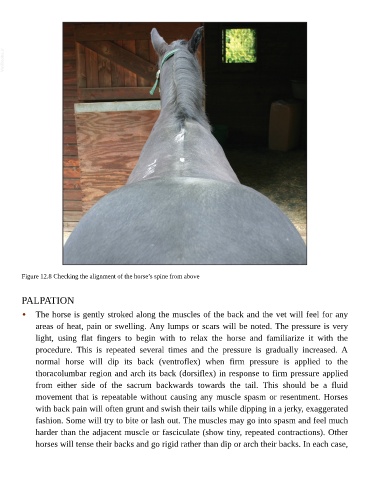Page 540 - The Veterinary Care of the Horse
P. 540
VetBooks.ir
Figure 12.8 Checking the alignment of the horse’s spine from above
PALPATION
• The horse is gently stroked along the muscles of the back and the vet will feel for any
areas of heat, pain or swelling. Any lumps or scars will be noted. The pressure is very
light, using flat fingers to begin with to relax the horse and familiarize it with the
procedure. This is repeated several times and the pressure is gradually increased. A
normal horse will dip its back (ventroflex) when firm pressure is applied to the
thoracolumbar region and arch its back (dorsiflex) in response to firm pressure applied
from either side of the sacrum backwards towards the tail. This should be a fluid
movement that is repeatable without causing any muscle spasm or resentment. Horses
with back pain will often grunt and swish their tails while dipping in a jerky, exaggerated
fashion. Some will try to bite or lash out. The muscles may go into spasm and feel much
harder than the adjacent muscle or fasciculate (show tiny, repeated contractions). Other
horses will tense their backs and go rigid rather than dip or arch their backs. In each case,

